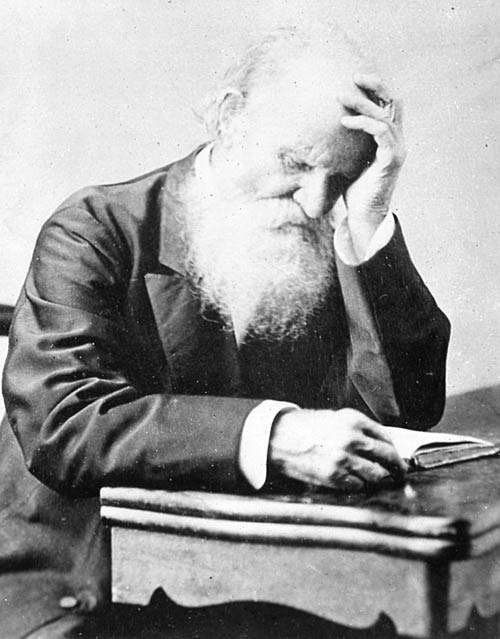Book reveals life of early German family

In 1903, Louise Maertz wrote a book about her father, Charles Augustus Maertz (1811-90). It was privately printed for the Maertz family with a copy in the collection of the Historical Society of Quincy and Adams County.
The book provides a glimpse into the lives of an early German family in Quincy.
Born in Berlin, Charles attended compulsory school from age 6 to 13 in Prussia.
After completing school, he apprenticed as a book binder, but the shop's air was bad for him, and he was placed with a coppersmith. He was there from age 13 to 18 and remembered the coppersmith as cruel and hard. After serving as a journeyman, he opened his own business and soon moved to London. He stayed two years and immigrated to America, arriving in New York in 1833.
That same year, he sailed for New Orleans and then to St. Louis. Louise Mertz says "… he found small demand for brass and copper work in the rude and crude mode of American life" and became a tinsmith. He married Ottilia Obert (1811-1903), who was from the Grand Duchy of Baden, in 1834. They moved to Quincy in 1836 and rented a house for $18.50 per month. The next year, he lost his eye in a roofing accident but continued to practice his trade for 21 years while accumulating many properties. The family included eight children, four of whom died in infancy. Charles and Ottilia were Quincy pioneers settling when the city was just a cluster of log cabins, described in her obituary as a "backwoods settlement." Charles started working out of his home, taking in boarders (to afford the rent), and during the winter of 1838-39 opened their home to a Mormon family consisting of a blind man, his wife and six children.
Charles and Ottilia valued education, but their children rarely attended school, instead being privately tutored by a graduate of the University of Berlin. The children were taught writing, mathematics, history, drawing, music and German. Louise said her father encouraged learning, had an interest in history and spent his spare time reading.
Charles became a citizen in 1840, was politically active, wrote for the Quincy Herald, and gave stump speeches in German for various candidates. "He grew to love America better than the Fatherland." During hard times in 1841, he left the family to look for work in New Orleans and to check on a Texas land grant that turned out to be worthless. His daughter says they had the first set of mahogany haircloth upholstered furniture made in Quincy by F.W. Jansen in 1845. She described it as massive but plain. "O.H. Browning told father that ours was the best parlor furniture in town."
The family frequently suffered from malaria and endured the loss of two sons and one daughter in the 1840s. According to Louise, "Never did our precious father cease to mourn for his first born son. Even down to old age he often spoke of him lovingly and wept for his loss."
Charles opened stores in Quincy and LaGrange, Mo., where with partner, John Beebe, he sold tinware and stoves. The book describes him as having a large business in tin roofs and gutters. In 1854, the family lived at Sixth and Broadway in a 14-room house, which was one of the largest homes in Quincy. At that time, there was little money in circulation and a lot of business was done in-kind. However, he paid cash for lots, bought often and was frequently in debt. Never one to stay home for long, he went to the Nebraska Territory in 1855 to lay out a town with some friends. Due to ill health he retired from his businesses in 1857 but continued to build houses and to buy and sell property. He bought a plat on 24th Street and while waiting for purchasers, planted trees and cultivated corn and hay. His home had a large garden of fruit trees and grapevines in the backyard and rose bushes in the front.
Religion was important in the Maertz family life and included daily worship. Charles moved from the Lutheran church of his childhood to the Congregational church, and eventually to the Baptist church when he changed his views on baptism. He neither smoked nor drank until he was 59, when on his doctor's orders, he would have a daily beer. By 1858, he voted for the Democratic presidential nominee James Buchanan, but later became disgusted with the views of the Democratic Party. He deeply regretted he was unable to serve in the army during the Civil War, as the loss of his eye disqualified him. The family took wounded soldiers into their home and made daily visits to the soldiers in Quincy hospitals.
After the war, the family spent two years touring Europe. While traveling, Charles took up painting and produced 60 pieces during the remainder of his life. The two younger daughters attended boarding school in Switzerland, and the others had private teachers in Germany, Switzerland, and Italy. By the end of his life, Charles Maertz had bought and sold 22 houses and planted thousands of trees in Quincy. Louise Maertz described his death: "Becoming restless, we placed him in the large armchair, where slowly his soul let loose its hold of the material and rose to the transcendent bliss of spiritual existence, 10 o'clock P. M., January 7, 1890."
Of his four daughters who survived into adulthood, Louise was the only one to remain unmarried. Her life was filled with accomplishments and in 1895, she endowed the Maertz Ward for men in Blessing Hospital in memory of her father. Always modest, she wrote lovingly about her father and attributed her many talents to him.
Arlis Dittmer is a retired medical librarian. During her 26 years with Blessing Health System, she became interested in medical and nursing history.






